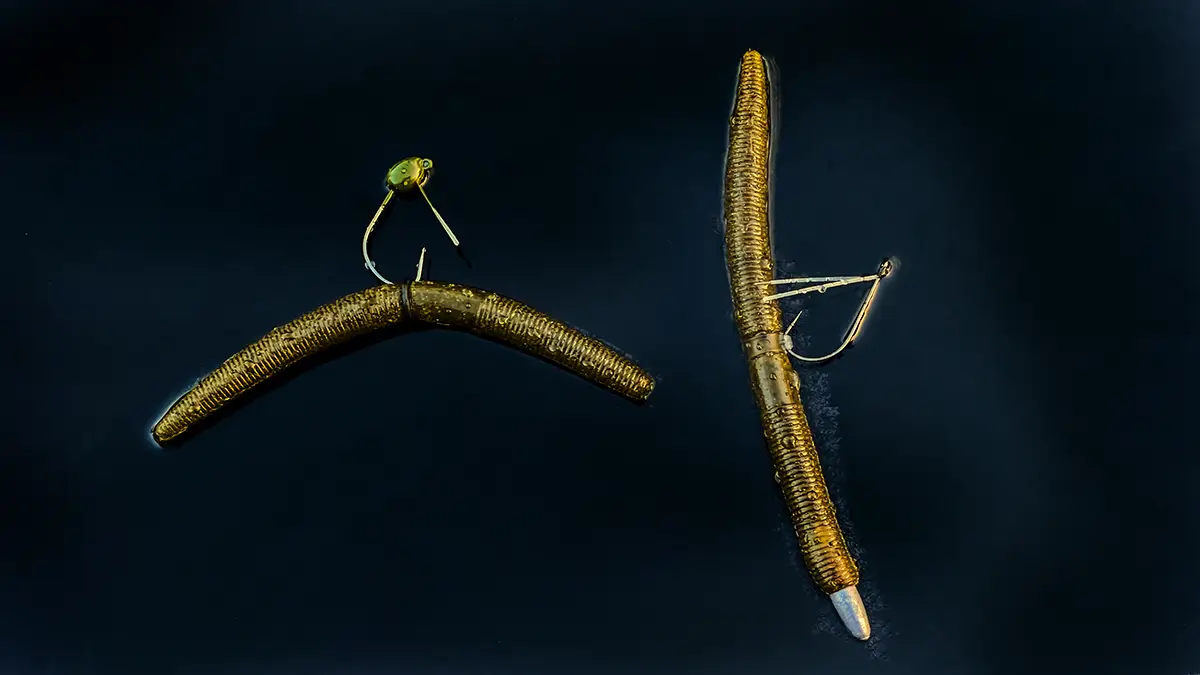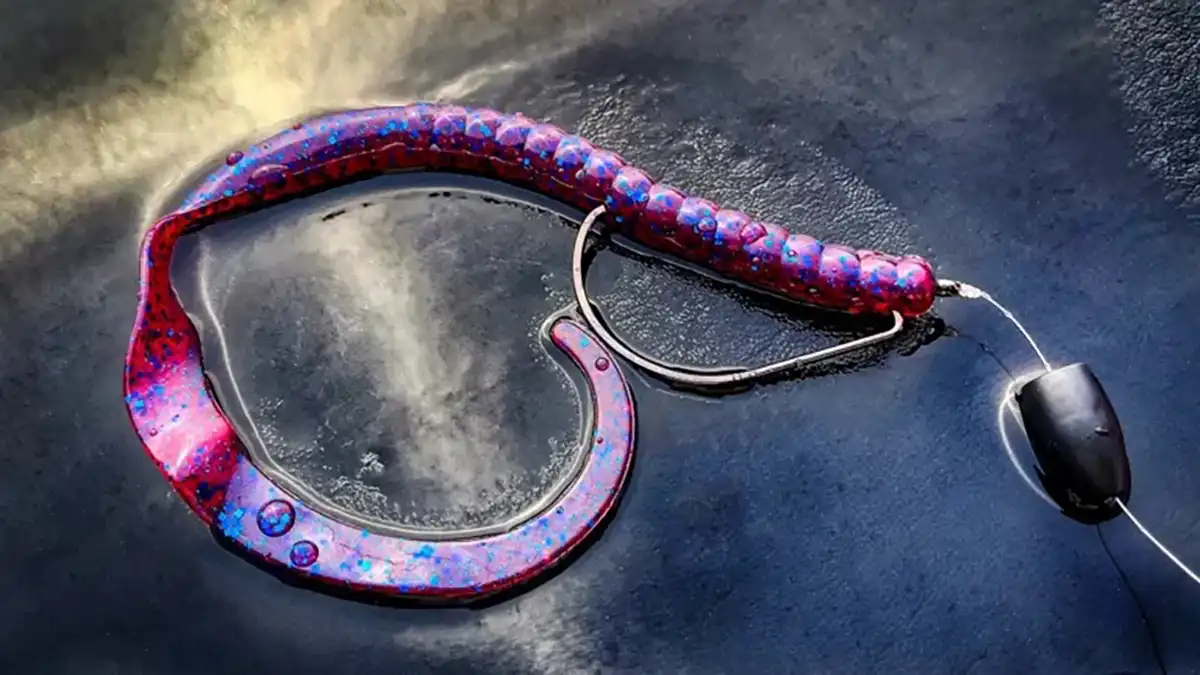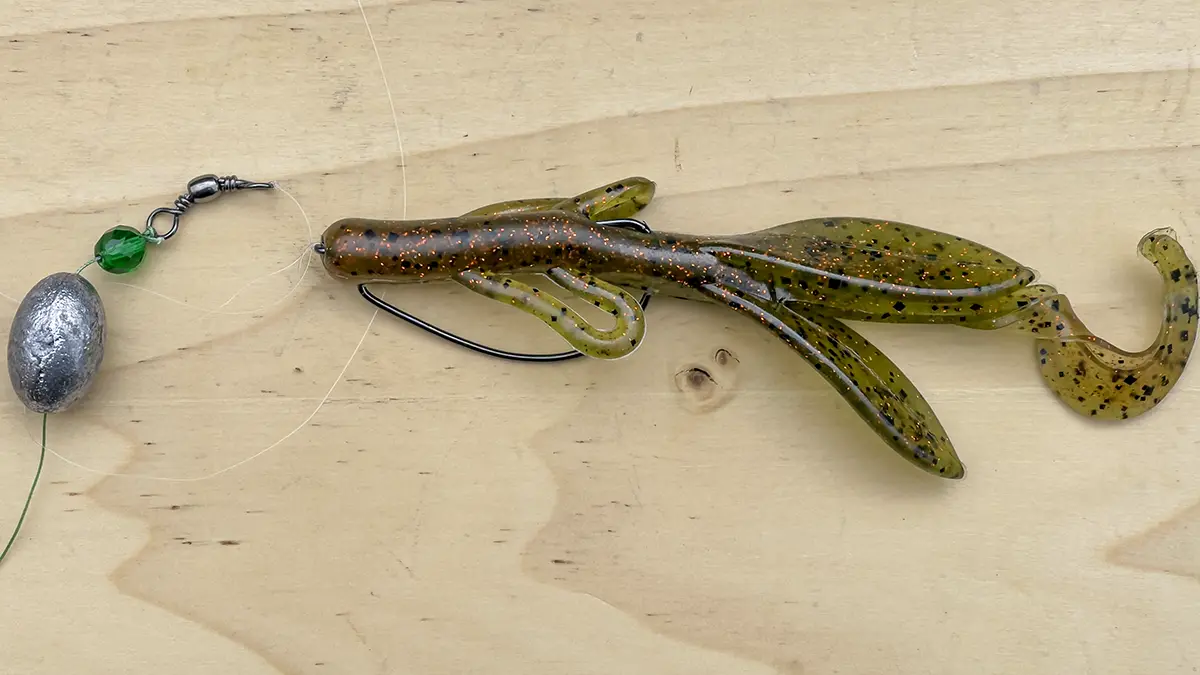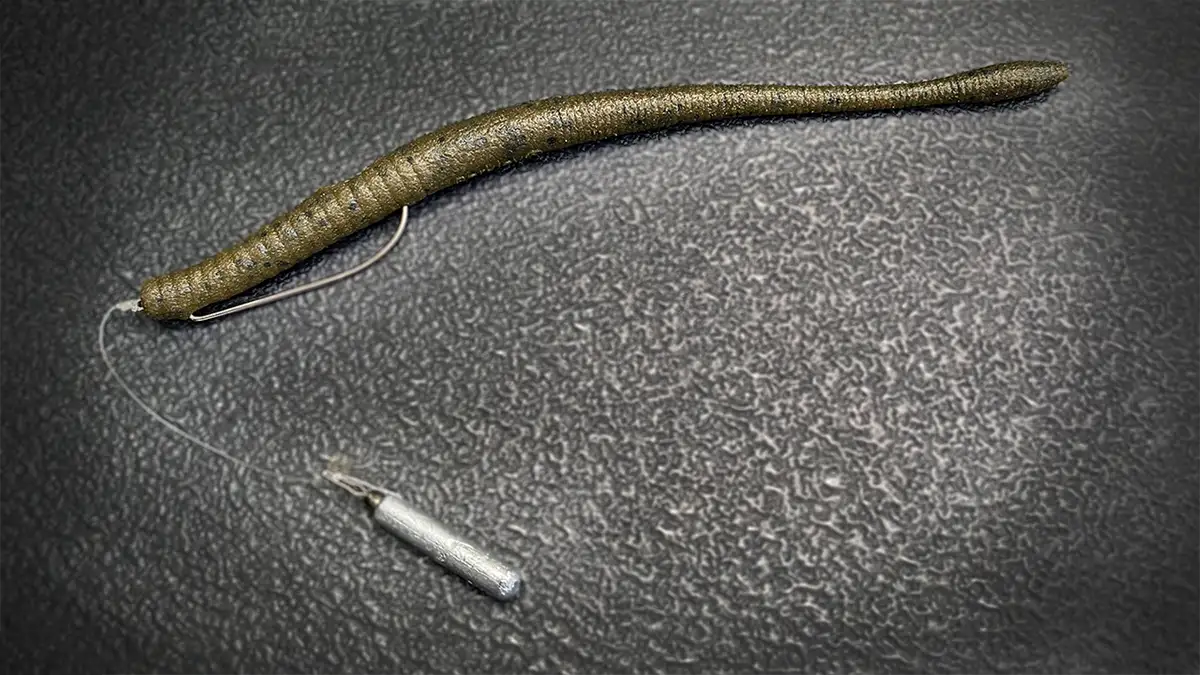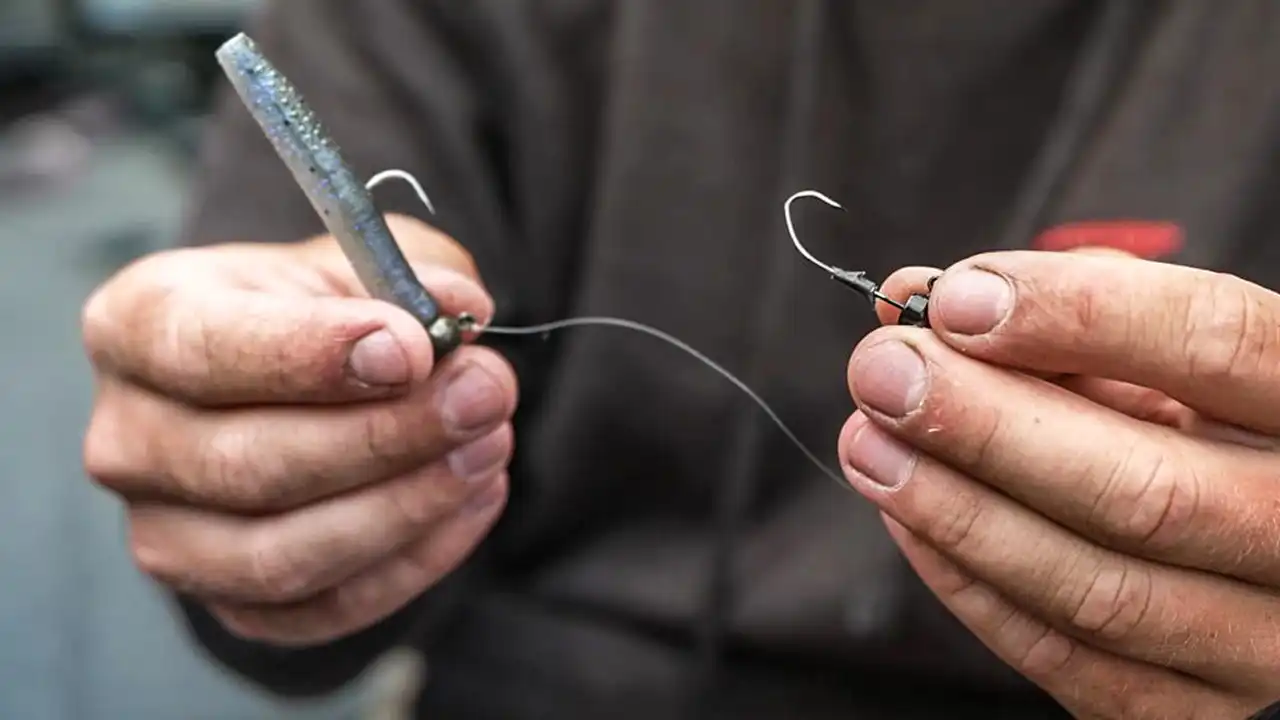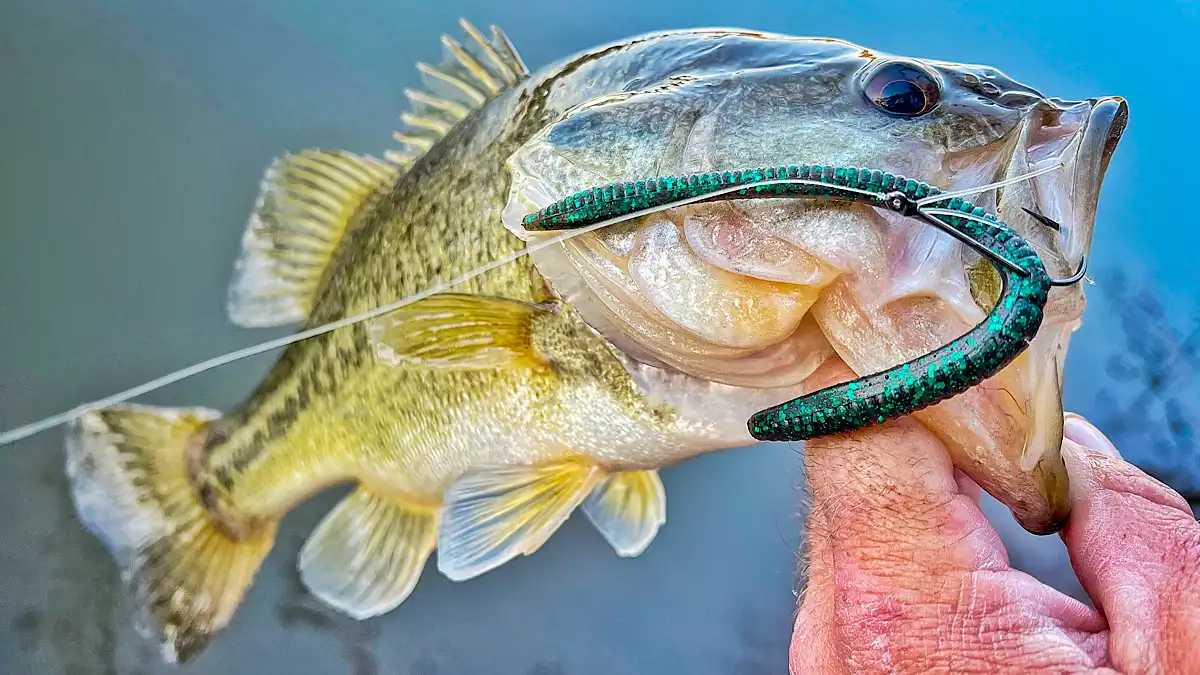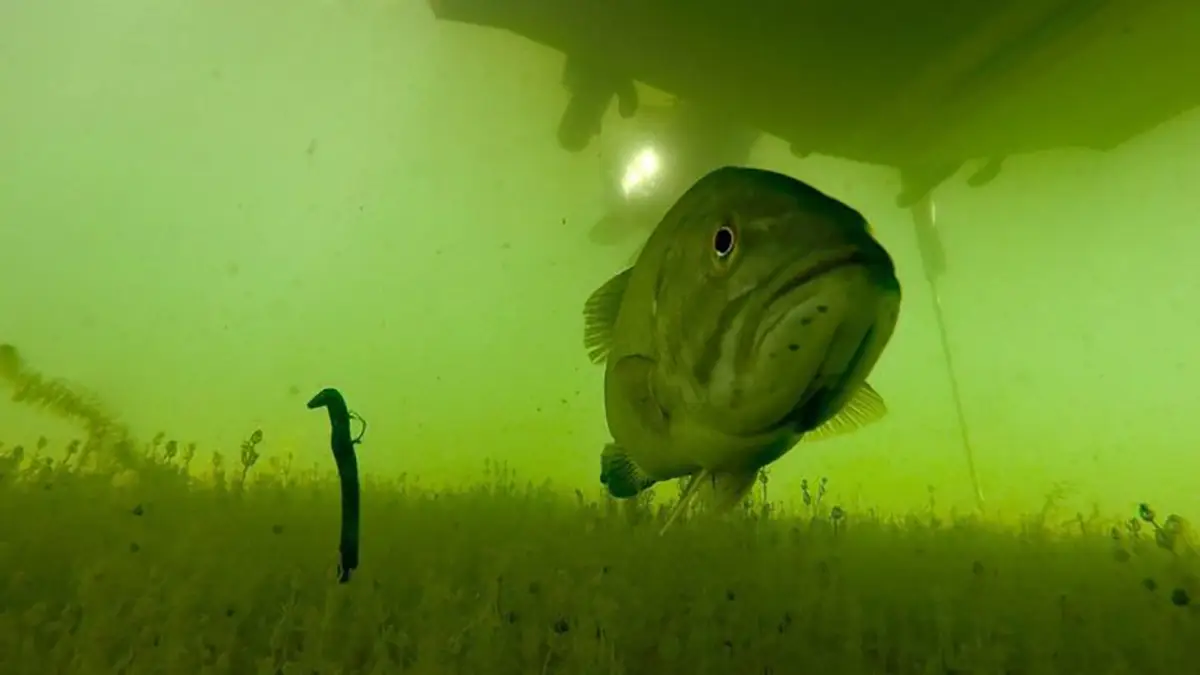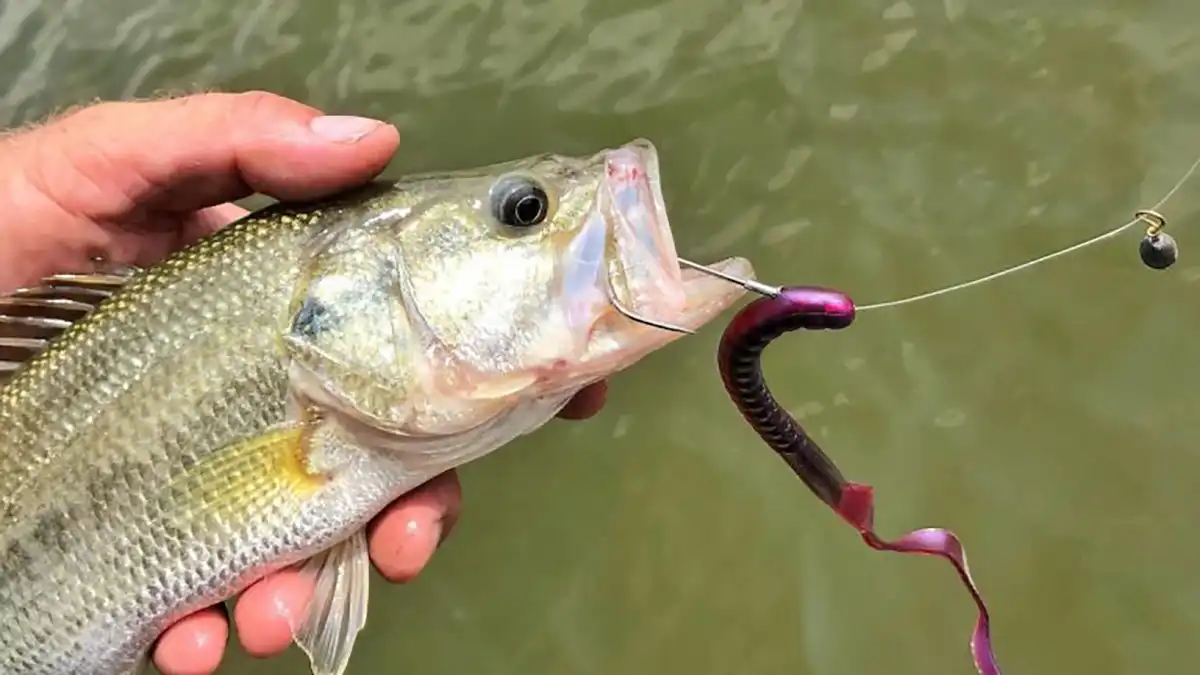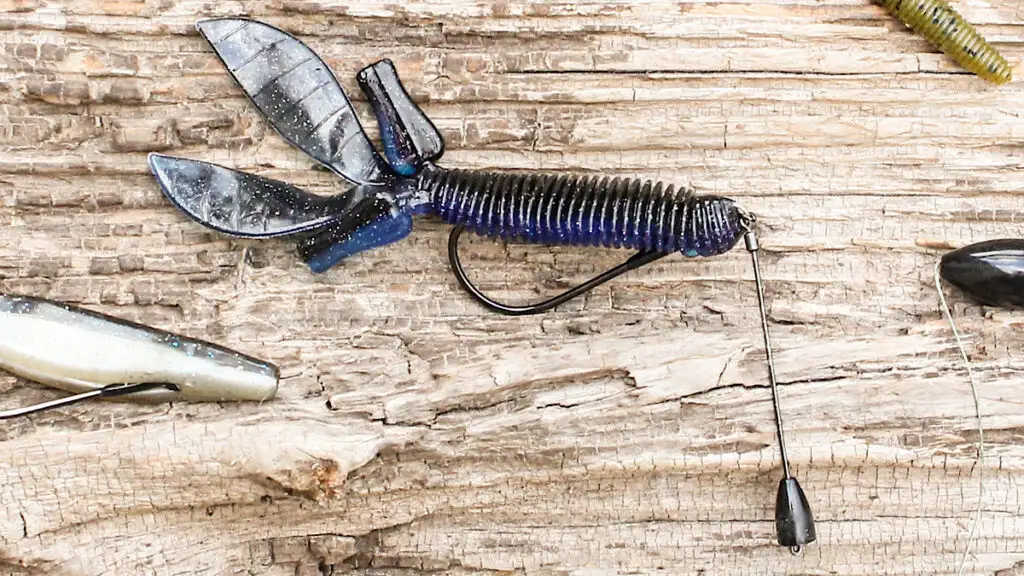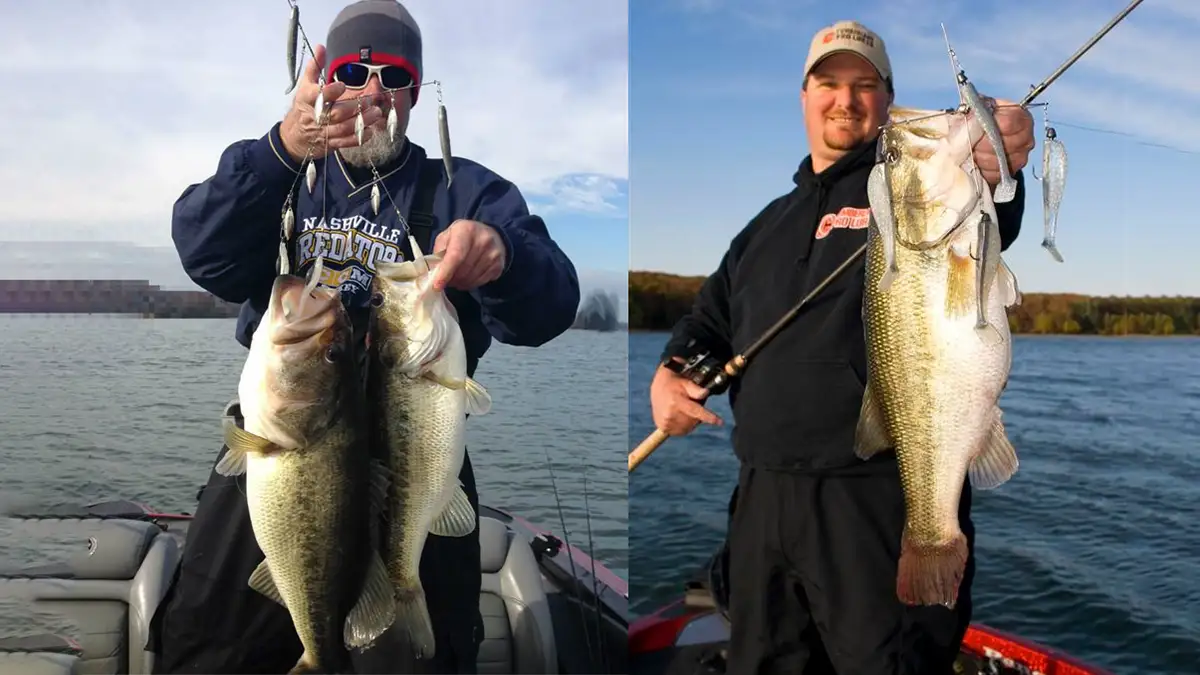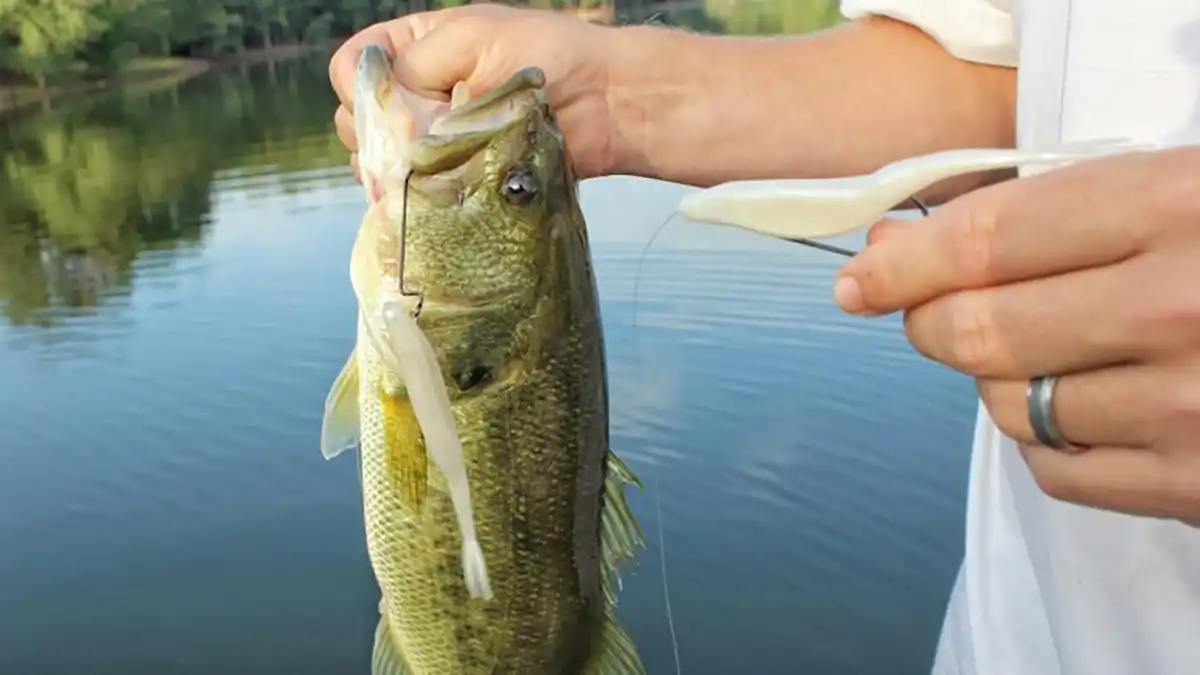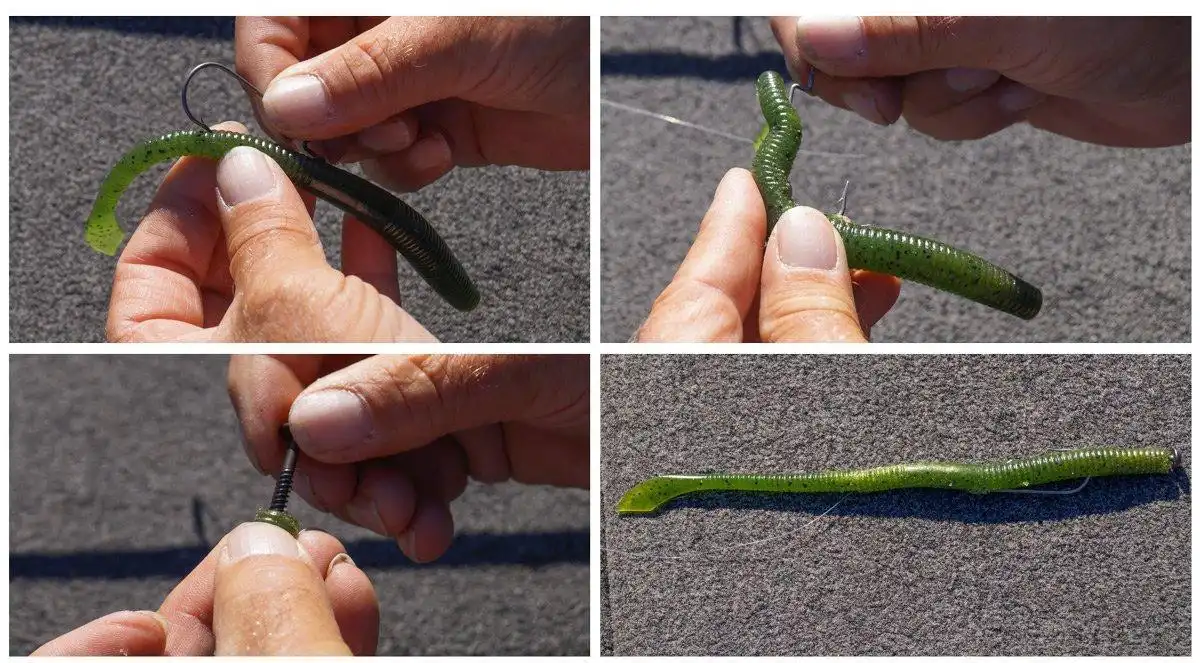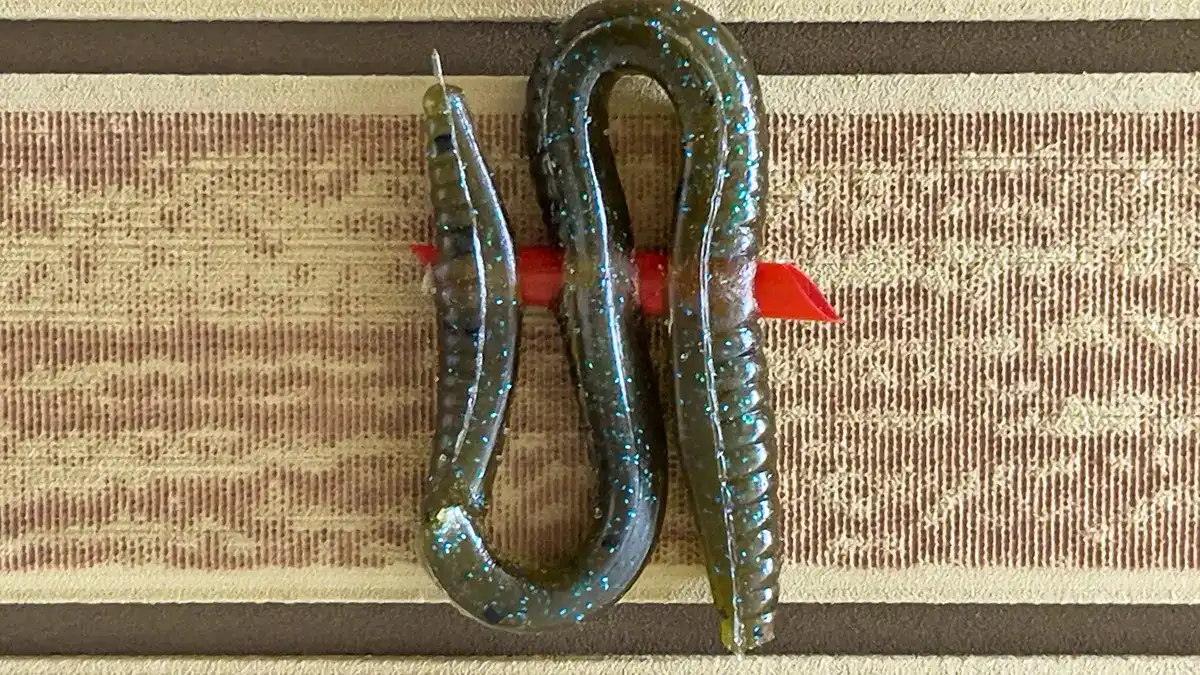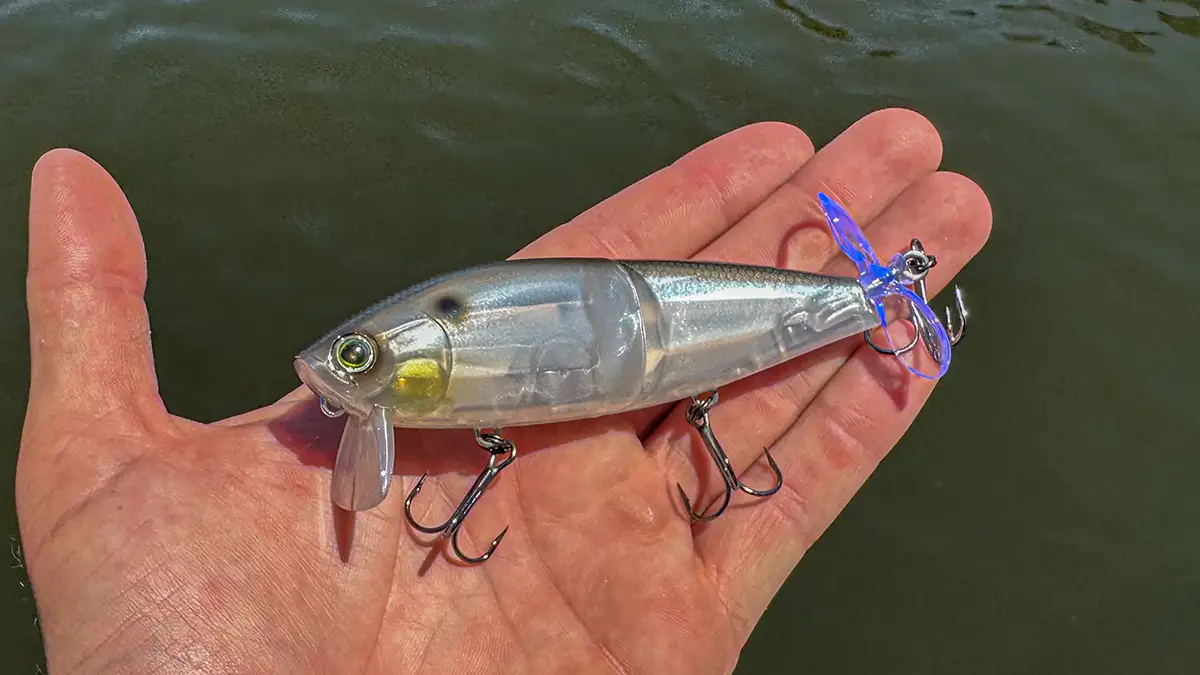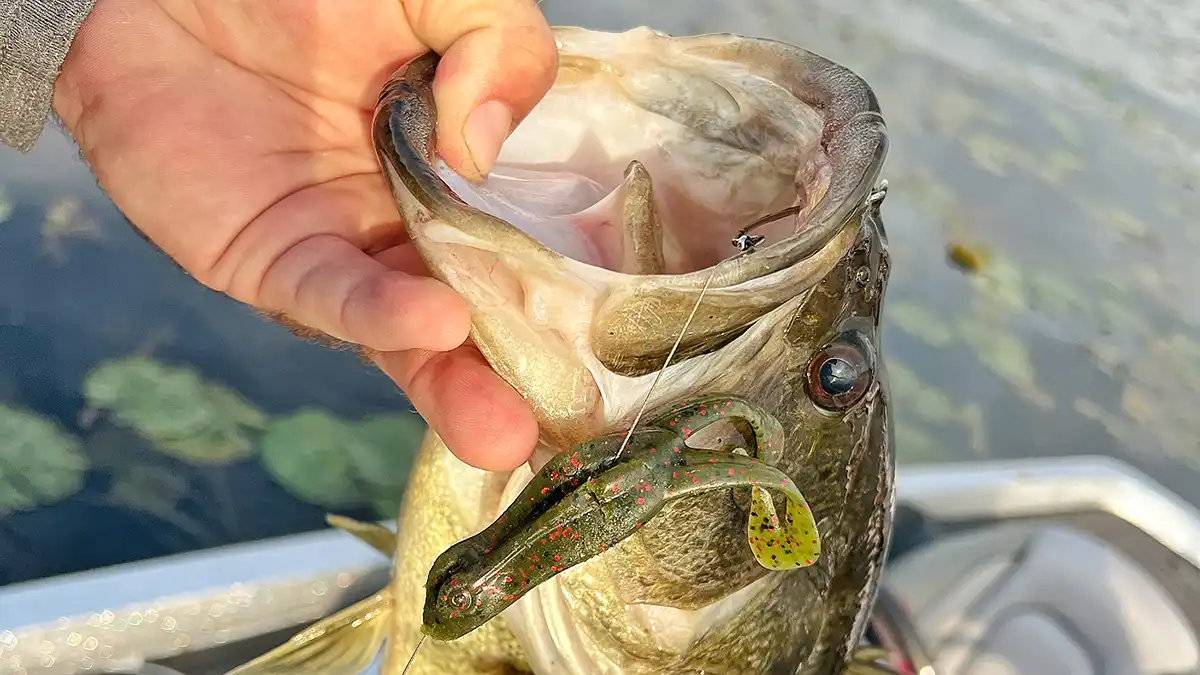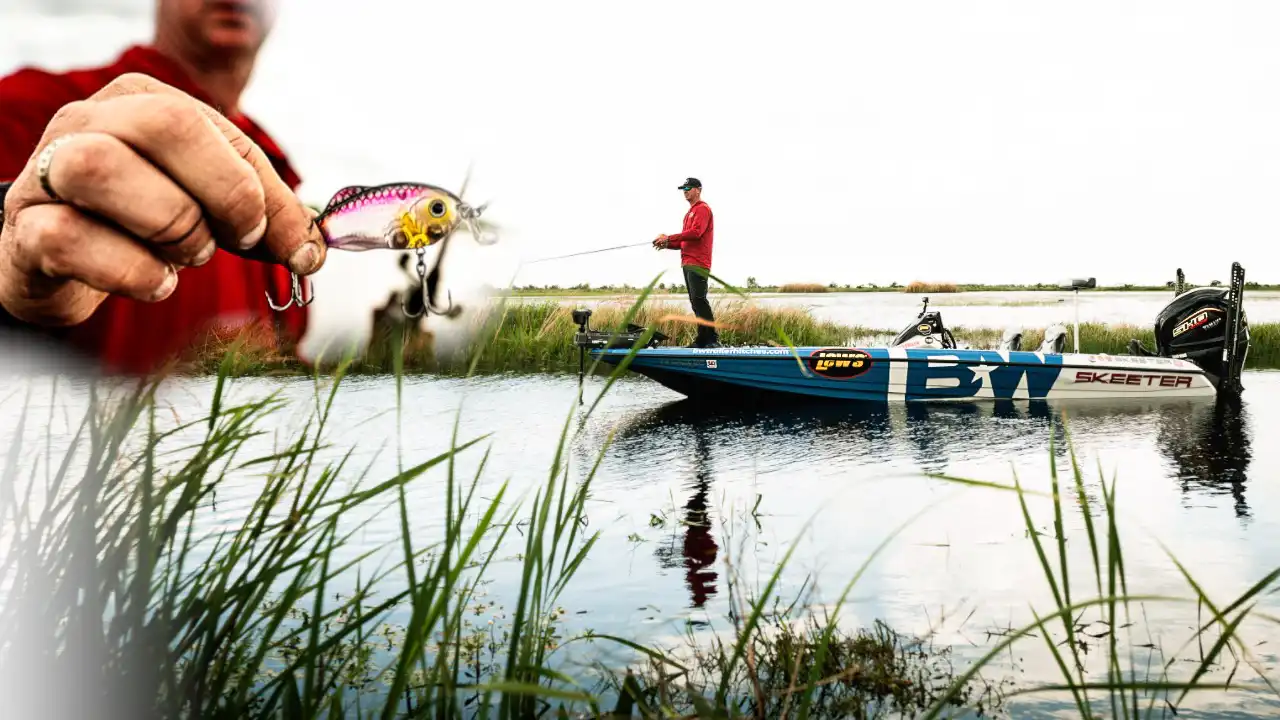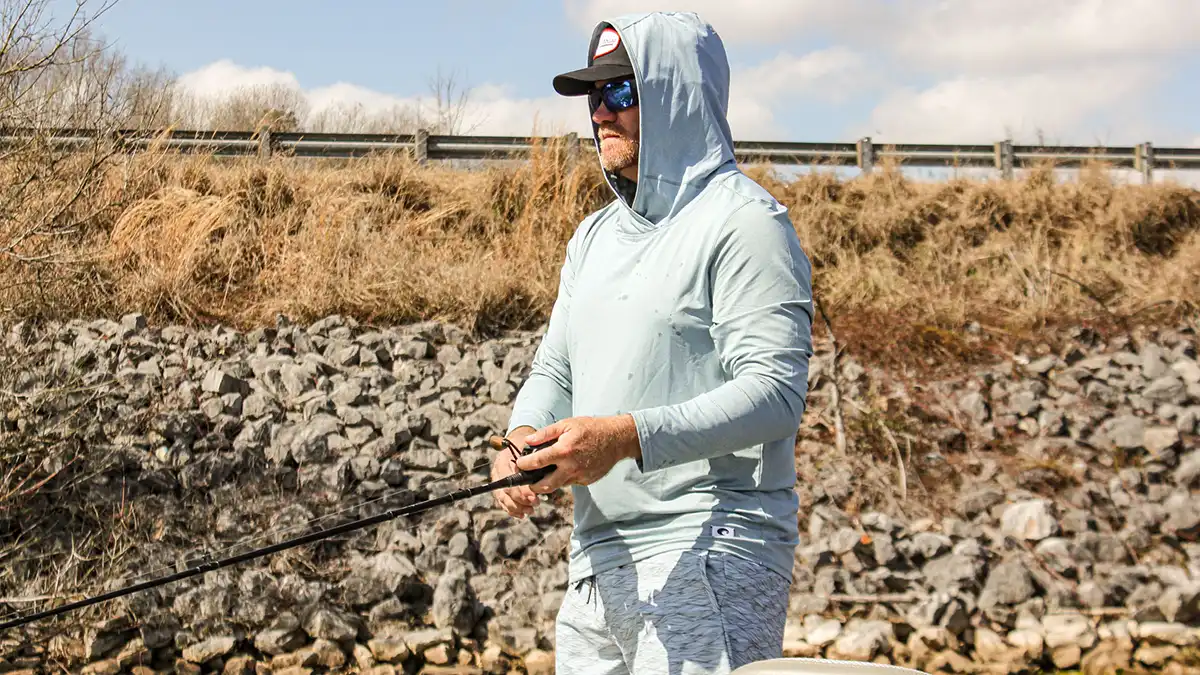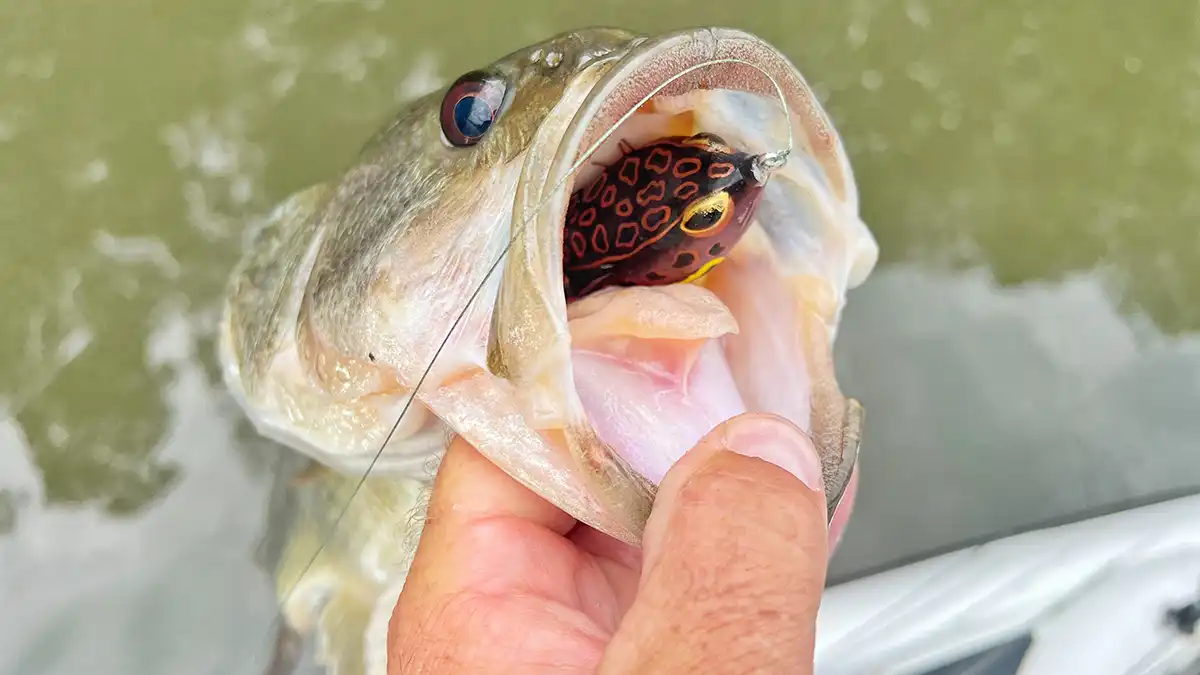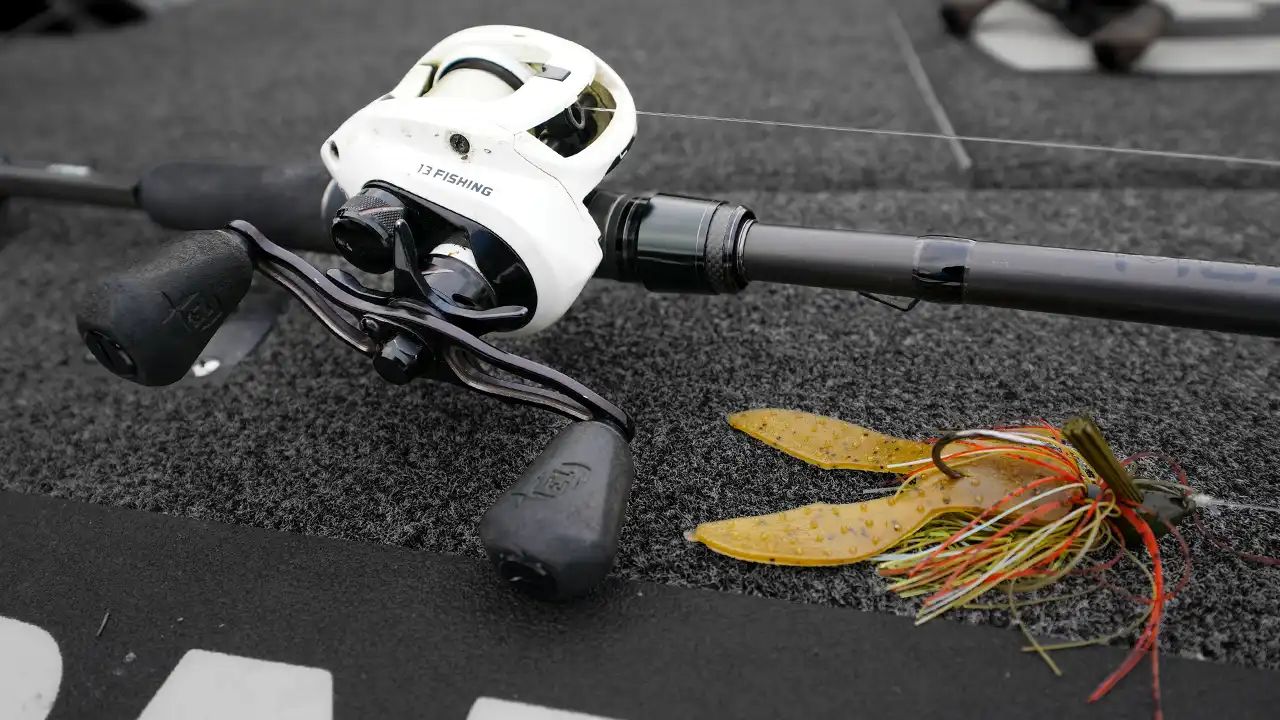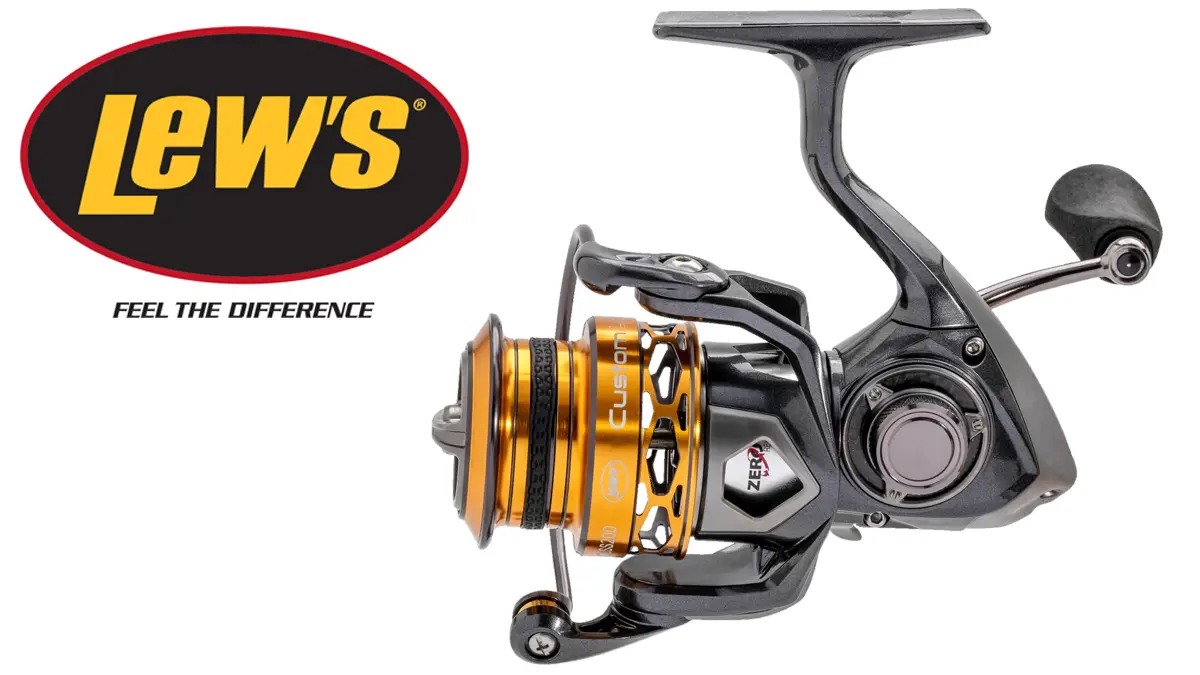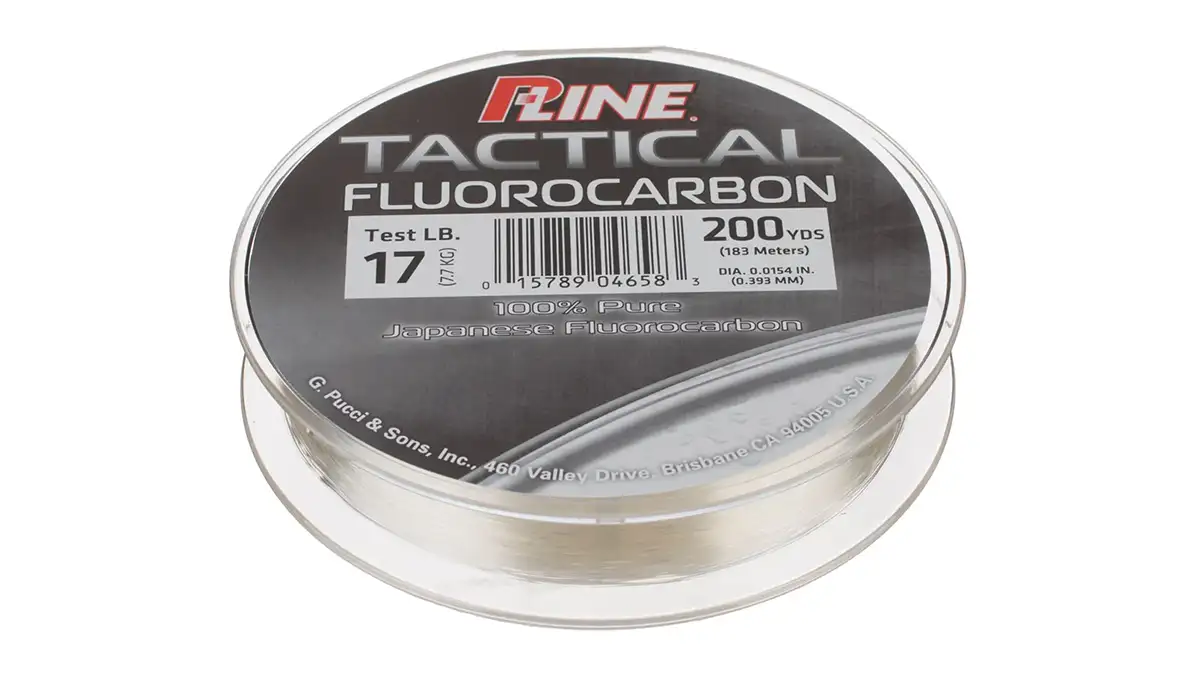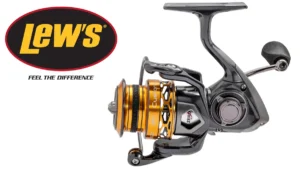There are dozens of ways to rig a soft plastic bait for bass fishing. But most of the best bass rigs are comprised of three main parts: a weight, a hook and a soft plastic lure. Some rigs, however, can be a little more complex, like the Donkey rig (Double Fluke rig) which uses uses two hooks, two soft plastic jerkbaits and two swivels.
Then there’s the Umbrella rig, which is a whole other beast of its own. All of these different rigs are worth taking a look at, and most are worth incorporating into your arsenal, as several of these can be used to catch bass in a wide variety of different situations.
Though this isn’t an exhaustive list, we have compiled some of the best bass rigs below for your consideration, along with brief descriptions of them as well as in-depth articles on how to rig and fish the vast majority of these best bass rigs.
- Texas Rig
- Carolina Rig
- Ned Rig
- Wacky Rig
- Neko Rig
- Drop Shot Rig
- Free Rig
- Tokyo Rig
- Alabama Rig
- Donkey Rig
- Chicken Rig
- Inu Rig
1. THE TEXAS RIG
The Texas rig is among the more simple and likely the most versatile of all these bass rigs. Take a simple bullet weight, 4/0 round bend worm hook and a soft plastic worm and put them together and you can travel the whole country catching bass everywhere you go. This a great rig to fish in 2 feet or 20 feet, along a clean bottom or in thick cover, and amidst any water color. It’s easy to rig. Easy to tie and just flat out catches them from coast to coast. Arguably the best bass fishing lure is a worm and the best way to rig it of all time would have to be a Texas Rig.
See how to tie and fish the Texas Rig here.
2. THE CAROLINA RIG
Think of a Carolina rig as a Texas rig’s big, more stretched out brother. With this rig, a large weight is slid up onto the line, followed by a bead or two, and then a swivel is tied on to hold these in place.
Next, a fluorocarbon or monofilament leader line is tied to the other end of the swivel and a hook is tied onto the tag end of that leader line. Slip a soft plastic on and you’re ready to slowly drag a C-rig along the bottom, putting one of the best bite-getting rigs on earth at your disposal.
Learn how to tie and fish a Carolina Rig.
3. THE DROP SHOT RIG
One of the best bass rigs for vertical fishing, a drop shot rig consists again primarily of a weight, a hook and a soft plastic; but this rig reorders the three. For starters, tie your hook onto your line, being sure to go through the face of the eye first (the hook-point side of the eye). Also during this process, you’ll want to leave a long tag end (roughy 10- to 24- inches depending on how high off the bottom you want your bait to be).
Once the knot is secure (a simple Trilene knot will suffice), take the long tag end and run it back through the face of the hook eye. When you pull on that tag end and your mainline simultaneously, your hook should stand straight out. You can either nose hook a soft plastic onto the hook, or rig it weedless, and then finish off your dropshot rig by adding a drop shot weight to the bottom of your tag end.
Master rigging and fishing the drop shot rig.
4. THE NED RIG
A Ned rig is another great technique when the fishing is tough and you’re just looking to get a bite at any cost. But, this rig isn’t just for tough fishing, it catches big ones too—especially spotted and smallmouth bass.
A very simple rig, just slide a minute soft plastic up onto a flat-headed Ned head and you’re ready to go. Even though the hook is left exposed on a Ned rig, it’s surprisingly snag resistant. And there are weedless Ned heads as well that incorporate a weedguard for even slippery setup when it comes to sneaking through cover.
See more about the Ned Rig here.
5. THE WACKY RIG
A Wacky rig can be assembled using a simple straight shank hook and a trick worm if you like, rigging the hook perpendicular to the worm with the hook going completely through the soft plastic near its midsection, and the bait resting in the bend of the hook when it’s all said and done.
Or, you can buy technique specific Wacky tools and hooks (some even with weed guards) as well as little rubber or silicone rings to go around the worm, which will help cut down on lost baits. Irregardless, a Wacky rig is one of the best bass rigs out there when fish are finicky and positioned near the surface.
See more about the Wacky Rig here.
6. THE NEKO RIG
A Neko rig looks a lot like a Wacky rig at first glance, but these two differ in a couple key ways. For starters, the orientation of the hook point is different. Instead of running the hook perpendicular to the worm like you would a with a Wacky rig, you want to rig the hook in-line with the worm, with the hook point facing up. “Up” is determined by which end of the worm you intend to add a weight to—which is the “down” end and the second key difference.
A nail or Neko weight is slipped into the nose of the soft plastic, with the hook point facing up and away from it. This creates a fairly snagless rig with a vertical orientation of the worm, that can be fished along the bottom with the hook pointed up, poised and ready to lock into an unsuspecting bass.
See more about the Neko Rig here.
7. THE FREE RIG
A free rig again takes these three elements we keep seeing, but puts them together with a twist. This time, run your line through the ring of a bell weight, and then tie on the hook of your choosing—round bend, EWG and straight shank hooks all work well here.
Slip a soft plastic bait like a lizard or trick worm up onto the hook, rigging it weedless, and now you have a Free rig. The term “free” is a reference to the bell weight, which is allowed to move freely up and down your line. This allowance creates more subtle movements in the bait as it washes along on the bottom, the bell weight not being as restrictive as the bullet weight of a Texas rig would be.
See more about the Free Rig here.
8. THE TOKYO RIG
A Tokyo rig can be thought of as a little power fishing drop shot. Similar to a drop shot, a Tokyo rig keeps the soft plastic up off the bottom a bit—but the gap between bait and bottom is much smaller with a Tokyo rig. This gap is also maintained by a rigid metal wire as opposed to fishing line.
Again, like a drop shot, there’s a weight at the bottom of this rig that keeps it on the bottom, but this weight is held in place by bending the tip of the wire after the weight has been slid on. Upward facing bullet weights work well with Tokyo rigs, as the pointed ends slip through rocks and other debris better than rounder weights would.
See more about the Tokyo Rig here.
9. THE UMBRELLA / ALABAMA RIG
An Umbrella rig, and the more commonly used castable version for bass fishing called the Alabama rig, differs from the rest of the rigs on this list drastically. For starters, there are typically at lease five soft plastic swimbaits used on an umbrella rig. Each swimbait is slid onto a jighead, which is then hung from one of the fanned out metal arms of this rig.
An umbrella rig can also be used to target suspended fish far better than most of these other rigs, which are better at catching bass at or near the bottom. Big baitcasting gear is also needed for this rig, as the conglomeration of metal and plastic can quickly add up to a lot of weight.
See more about the Alabama Rig here.
10. THE DONKEY RIG (DOUBLE FLUKE RIG)
A donkey rig (or double Fluke rig) differs from all of the other rigs we’ve discussed so far as well in one key way, there’s no weight involved. Two weightless Texas-rigged soft plastic jerkbaits are used with this setup to create a mesmerizing dance as the two baits dip and dart just below the water’s surface.
Put this rig together by sliding a swivel up onto your mainline and then tie another swivel to the end of that line to keep the first swivel from slipping off. Then, tie a 2-foot piece of leader line onto the open end of the first swivel and a 3-foot leader line onto the open end of the second swivel. Tie a 4/0 offset shank hook onto the end of each piece of leader line and slip a soft plastic jerkbait on each, and you’re ready to.
See how to rig and fish the Donkey (double fluke) rig.
11. THE CHICKEN RIG
The chicken rig is bit of a different breed again, its closest cousin being a Neko rig—think weedless Neko rig standing on its head and you’ll be getting pretty close. Start off by tying on an offset shank worm hook and then stick the hook into the midsection of the worm (hook pointed towards the head of the worm), running the worm up onto the shank of the hook about 2-inches.
Pop the hook point out and then let the worm come to rest on the sharp bend in the shank near the eye of the hook. Stick your hook point though the worm, leaving it slightly exposed or skin hooked on the other side. Add a Neko or nail weight to the head of the worm and you have yourself a chicken rig.
See more about the Chicken Rig here.
12. THE INU RIG
An Inu rig is one of the latest oddball rigs to come out of Japan. Here’s a quick and dirty way to do it with a trick worm, Neko hook, split ring and straw.
Take a coffee stirrer straw and cut a 45 degree angle on one end. Stick the pointy end of straw through the top of the head of the trick worm at an angle, then bring the belly of the bait up to the sharp point of the straw and stick it through at an angle again. Then go back through the back of the worm one last time as you pass the straw through the tail end of the bait.
Now, snip off all the pieces of straw that are exposed. Add a touch of glue to each place where the straw went through the bait to secure the pieces of straw. Now, you’re left with a worm that has three small segments of straw running through it. Skin hook a Neko hook through the back off he head of the worm, so that the hook points up and the eye of the hook is positioned directly over the first straw hole.
Now, run your line through the eye of the hook, but don’t tie the hook on. Continue running the end of your line through each section of straw in the same direction that you pushed the straw through to begin with. At the end of your line, you now tie on a split ring using whatever knot you have confidence in. The split ring is there to ensure that no matter what, the free swinging hook can’t slip off the line during a fight. You could also use a drop shot or bell weight at the bottom of this rig to fish it in deeper water.


